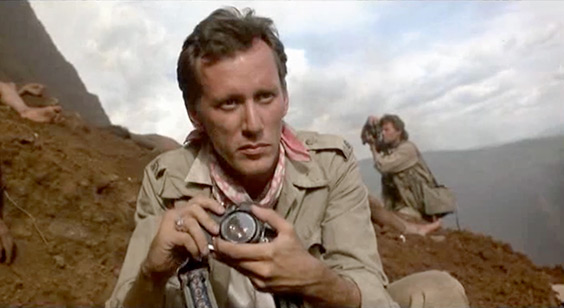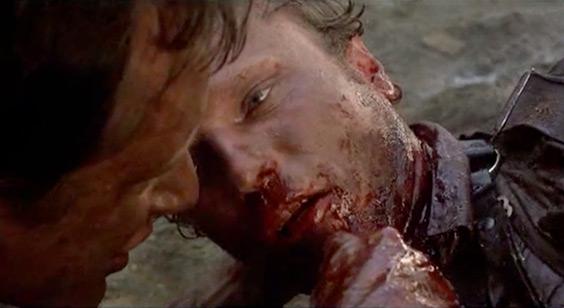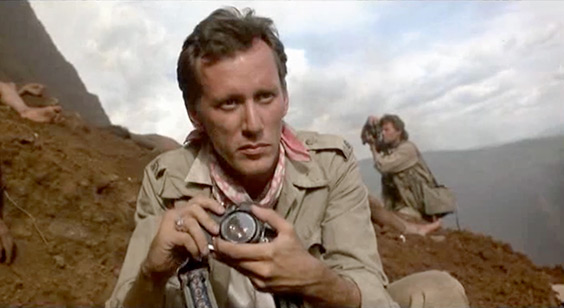Salvador is a great movie to watch if you’re interested in photojournalism. Richard Boyle (James Woods) is a burned out journalist (and self-professed weasel) who, along with a DJ sidekick, Doctor Rock (Jim Belushi), heads down to El Salvador to see if he can pick up some freelance work. The two Americans arrive in time to witness the assassination of Oscar Romero, the murder of four church workers, and the U.S.-backed military push to crush the leftist guerrillas. Boyle connects with a more professional journalist, John Cassady, who feeds him some work.

Before things really blow up, they go together to photograph the bodies of the disappeared. It helps survivors identify loved ones. As they’re wandering through a dump site, they have a conversation about photography and Robert Capa:
You know what made photographers like Robert Capa great, Rich? They weren’t after money. They captured the nobility of human suffering.
That was a great shot in Spain. One flying through the air.
Yeah, but it was more than a body, Richie. He got…why they died. That’s what Capa caught. He caught that moment of death.
You’re right up there with him, John. You’re in his league. You’re the best.
You gotta get close, Rich…to get the truth. You get too close, you die. Someday…I want a shot like Capa. Someday. Someday.
But there’s a scene near the end of the film that seems to undermine what they say. Boyle and Cassady are running in the line of fire between rebels and the military. They’re clearly sympathetic to the leftist rebels and hope to capture that decisive moment when the people of El Salvador take back their country. But the U.S. turns on its military aid pipeline, with all its big machinery. Boyle and Cassady can see the tanks and planes coming. Cassady is after his shot and stands his ground while a plane does a strafing run. Boyle watches in horror as Cassady takes a bullet. He performs a field tracheotomy with a switchblade and a pen. Cassady’s last words are: “I got my shot.”

The problem with the scene is that, on his own terms, he doesn’t get the shot. He gets a shot of a plane flying high overhead and, maybe, puffs of dust where the bullets hit the ground. What he doesn’t get is a closeup that captures the kind of moment that he values in Capa’s work.
Boyle agrees with him – yeah, you got your shot – and promises to take the film back to New York for processing. But either Boyle’s stupid for not realizing that the shot doesn’t measure up, or he’s trying to comfort a dying man. At least that’s how I view the film. I think we’re meant to view it straight: he got his shot and paid the price. But, photographically speaking, he paid the price for nothing.
